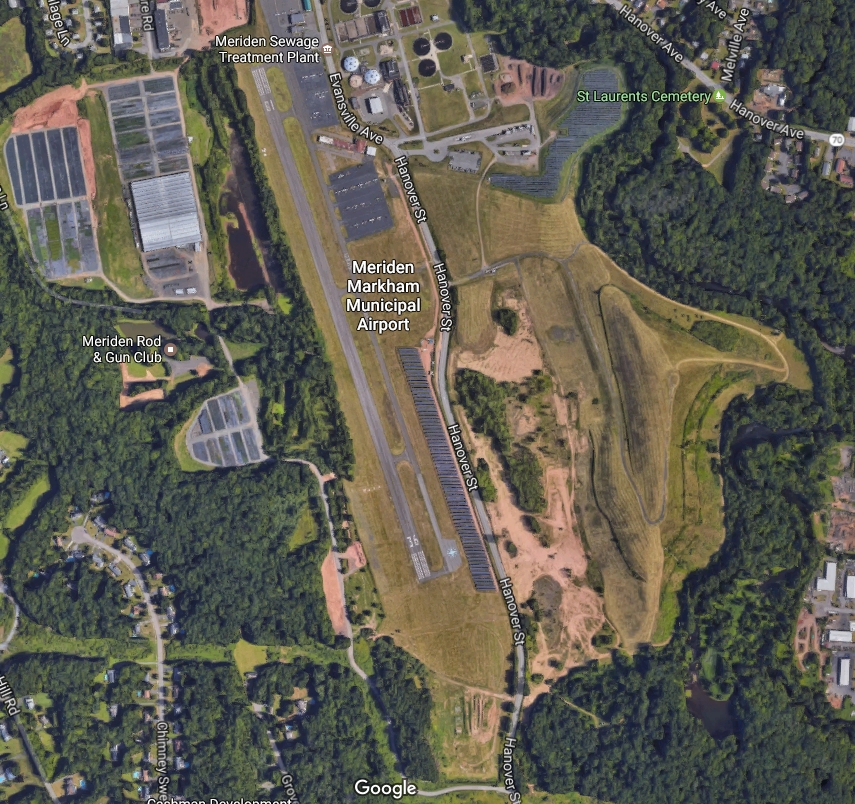
ASN Wikibase Occurrence # 195010
This information is added by users of ASN. Neither ASN nor the Flight Safety Foundation are responsible for the completeness or correctness of this information.
If you feel this information is incomplete or incorrect, you can submit corrected information.
| Date: | Monday 24 April 2017 |
| Time: | 18:25 |
| Type: |  Cirrus SR22 |
| Owner/operator: | Private |
| Registration: | N94LP |
| MSN: | 1484 |
| Year of manufacture: | 2005 |
| Total airframe hrs: | 1229 hours |
| Engine model: | Continental IO-550-N27B |
| Fatalities: | Fatalities: 1 / Occupants: 2 |
| Aircraft damage: | Destroyed |
| Category: | Accident |
| Location: | Meriden Markham Municipal Airport (KMMK), Meriden, CT -
 United States of America United States of America
|
| Phase: | Landing |
| Nature: | Private |
| Departure airport: | Wallingford, CT (MMK) |
| Wallingford, CT (MMK) | |
| Investigating agency: | NTSB |
| Confidence Rating: |
The accident flight was the private pilot's first flight without a flight instructor in his recently purchased, high-performance airplane. The passenger reported that, following an uneventful local flight, he and the pilot returned to the airport for a full-stop landing. Witnesses reported that the airplane was high and fast during the landing approach, touched down about halfway down the 3,100-ft-long runway, and bounced about three times before conducting a go-around. The second landing approach appeared to be slower but was still high. The airplane flared about 10 ft above the runway then abruptly descended, again touching down about halfway down the runway. The passenger reported that the airplane bounced "a couple of times" and that the bounces were "pretty high." A witness stated that, after bouncing, the airplane's engine rpm increased and the airplane became airborne, pitching to an approximate 40° nose-up attitude. About 75 ft above the ground, the airplane entered a steep, left-turning descent that continued to ground contact; the airplane came to rest next to a road just outside airport property and was consumed by a postcrash fire.
The witness accounts of the airplane approaching the runway fast and high and its touchdown point are consistent with the pilot's failure to fly a stabilized landing approach. This likely contributed to the airplane touching down on the nose landing gear first, as evidenced by the black tire marks in an S-shaped (sinusoidal) pattern co-located with white paint transfer marks on the surface of the runway, which are consistent with a nosewheel shimmy and nosewheel pant contact. After bouncing during the second landing, the pilot added engine power to conduct a go-around, allowed the airplane's pitch to rapidly increase, and entered a steep left turn before attaining a proper climb speed, which resulted in a loss of control during the attempted go-around.
Examination of the wreckage revealed no evidence of any preimpact failures or malfunctions of the airplane or engine that would have precluded normal operation. The pilot had about 1,200 total hours of flight experience and had received about 10.5 hours of transition training in the accident airplane make and model from a local flight instructor. During that time, the pilot performed 12 landings and received an endorsement for operating high-performance airplanes such as the accident airplane. Before purchasing the accident airplane, the pilot owned another airplane that was not classified as high-performance. Despite receiving transition training, it is likely that the pilot's lack of experience with his new airplane and its flight characteristics, and particularly operation of the airplane in abnormal/emergency situations, contributed to his loss of control.
Probable Cause: The pilot's unstablilized approach and improper landing flare, which resulted in a bounced landing, and his subsequent failure to maintain control during a go-around. Contributing to the accident was the pilot's lack of experience in the accident airplane make and model.
Accident investigation:
 |
|
Sources:
NTSB
FAA register: http://registry.faa.gov/aircraftinquiry/NNum_Results.aspx?NNumbertxt=94LP
https://flightaware.com/photos/view/513530-3205b2b8e33ca7796d3db528f442d68c75cf3215/aircrafttype/SR22
Location
Images:

Media:
ICYMI - @NTSB news conference on fatal plane crash in #Wallingford. pic.twitter.com/D3SvqRSL62
— WTNH News 8 (@WTNH) 25 avril 2017
Revision history:
| Date/time | Contributor | Updates |
|---|---|---|
| 24-Apr-2017 23:50 | Geno | Added |
| 25-Apr-2017 00:05 | Geno | Updated [Aircraft type, Total occupants, Other fatalities, Nature, Departure airport, Destination airport, Source, Damage, Narrative] |
| 25-Apr-2017 01:03 | Geno | Updated [Total fatalities, Narrative] |
| 25-Apr-2017 04:23 | Geno | Updated [Registration, Cn, Operator, Source, Narrative] |
| 25-Apr-2017 14:05 | Iceman 29 | Updated [Time, Phase, Source, Embed code] |
| 25-Apr-2017 14:07 | Iceman 29 | Updated [Embed code] |
| 27-Apr-2017 08:51 | Iceman 29 | Updated [Source, Embed code, Narrative, Photo, ] |
| 10-Nov-2019 14:35 | ASN Update Bot | Updated [Time, Operator, Country, Nature, Departure airport, Destination airport, Source, Embed code, Narrative, Accident report, ] |
Corrections or additions? ... Edit this accident description
The Aviation Safety Network is an exclusive service provided by:


 ©2024 Flight Safety Foundation
©2024 Flight Safety Foundation